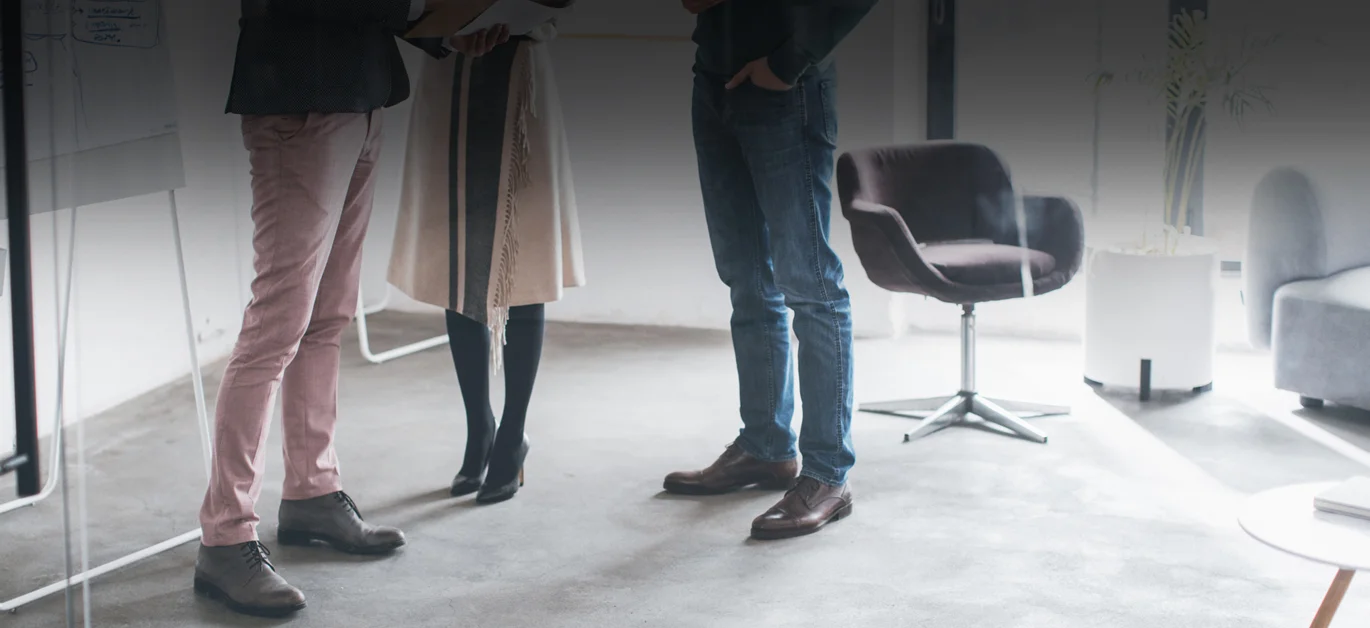Why Access Alignment, you ask? Aside from a love of alliteration, and a penchant for un-sexy brand names, I chose this name because it felt big enough to encapsulate three of the most important things we do:
1. Leading Purposefully: access alignment with your values
We continually witness and I’ve personally experienced how powerful it is to align purpose with path. When leaders align their values with their everyday actions:
- Everything falls into place.
- There is flow.
- Work can be done with greater ease, fulfillment and enjoyment.
- It’s not so heavy, burdensome or tiring.
- Impact multiplies.
2. Leading Fully as a Whole Person: access alignment with all parts of yourself
We know about IQ. We’re increasingly familiar with EQ and how this is essential for leading well. Very few understand or utilize SQ. In fact, what the heck is SQ?
SQ = soma (body) quotient. This is not even standard nomenclature yet but you’ve likely heard others touch on this untapped super power. Amy Cuddy, PhD taught us Power Poses. Bessel Van Der Kolk, MD explains how The Body Keeps the Score. And I learned from a decade of training in ZenBodytherapy® that our physical alignment - how we sit, stand and move - dramatically impacts how we think and feel. So increasing alignment physically and tapping into the brilliance of your body is something particularly potent. When you attune to all parts of yourself - head, heart and body:
- You connect more deeply with yourself, with others and the world around you.
- You increase empathy.
- You increase your capacity to be inclusive with others.
- It’s easier to create psychological safety.
- You know how to increase your own sense of safety in a world mired with triggers and trauma.
- You open doors and opportunities for yourself and for others.
3. Leading with Impact and Leverage: access alignment with others
When you’ve increased alignment within yourself, gaining alignment with others is a much easier, organic process. It’s far easier to craft a vision and embody it such that others are naturally drawn to it.
When you’ve done the groundwork of #1 and 2 above:
- You’re naturally more curious, humble, open and able to make adjustments or corrections when needed.
- You gain traction and influence.
- Generating or accessing alignment in your teams and in groups is easier and even exhilarating.
- Teamwork, collaboration, innovation, efficiency, and productivity soars.
Time Management Trick for New Habits
As we kick of a new year and a new decade, many of us gear up for personal and professional improvement. In order to improve something in your life a typical approach is to make time for a new practice. You have to add time to make it happen. If you want to lose weight, you start going to the gym. To make more money, you increase the amount of work. To be more present, you wake up earlier and meditate. But if you are a leader in any capacity your life is already full of things to do. For the perpetually busy, what could be more stressful than adding yet one more task?
An alternative approach would be to subtract. If you want to lose weight, eat less. If you want more money, spend less. If you want to be happier see what Bob Newhart says in this SNL skit. (If only it were that easy.)
But what if there’s another option; something neither additive nor deductive. Rather than starting something new, or stopping something old just shift what you’re already doing.
You already have to breathe, eat, drink and transport yourself from one place to another. You already attend meetings and have 1-1 conversations. How can you make the most of these moments? Here are a few examples of what our clients have done:
A seasoned VP felt constantly edgy and combative with the less experienced co-founders of his startup. A shift in his morning commute made all the difference. Instead of a news packed radio hour full of the latest shootings and world problems he listened to his favorite up-beat music. The music made him smile and he naturally felt more at ease and happy when he entered the office each day. He was less tense right out of the gate and therefore more open to their fresh ideas and perspectives.
For an engineer who wanted to speak more clearly and succinctly it wasn’t as simple as stopping his habit of speaking fast or rambling. For him, the shift was in posture, from slouching to standing straight instead. First, this unraveled patterns of tension and anxiety in his body. Second, it signaled to his brain that he didn’t need to be casual, slouchy or buddy-buddy with his co-workers. He needed to stand comfortably tall and in alignment. He practiced improving his posture daily during regular meetings. Nothing changed in his schedule, he just used meeting time more productively by practicing posture while listening and engaging. This micro shift practiced repeatedly over time led him to a game-changing conversation with a top level exec. He calmly and succinctly shared his idea and his skip-level superior quickly adopted it and rolled it out to the rest of the organization.
A new partner in a firm wanted to increase engagement with her team. When a move from the city to the suburbs increased her commute time she used her drive time as a valuable time to shift gears, connect, and have important conversations with her directs. She learned things about them and issues for the company as a whole that she would have missed had she not invested the time in connecting with them.
But wait, this sounds too simple. In Legacy, James Kerr tells the story about the famous All Blacks rugby team famous for their haka - a mighty ritual they use at the start of a match. According to Kerr such shifts are game changing. The All Blacks take their shifts to a new level by making them rituals. “You must ritualize to actualize.”
Step back…consider the flow and pattern of your day. Where could you simplify, slow down and be more deliberate? What small shift in effort will generate maximum return for you? What purpose are you trying to fulfill right now and what’s the easiest way to integrate that purpose into things you are already doing? This is where rubber hits the road. Cultivate habits that are uniquely powerful for you based on your specific purpose and your daily patterns. Then chart a path that starts where you are.
Oprah & Avatar on Leadership: The Gift of Presence
I just watched the movie Avatar again last weekend. It is probably my favorite movie of all time. It speaks to me on so many levels. One of the most powerful phrases used in this movie is “I see you.” It is used in the tribe of the Na'vi to convey unity between two souls.
In sanskrit, the greeting Namaste holds the same essence.
Namasté represents the idea that all are one. It affirms that beneath the outer trappings that make you appear different from others, you are made of the same stuff. You are more the same than you are different. - The Chopra Center
In 2014 Oprah spoke to graduate students a Stanford sharing her journey and her thoughts on life-path and leadership. Watch this sometime. It’s an hour so perhaps watch as an alternative to the latest binge-worthy TV series, or after you watch Avatar again. There are numerous insights in Oprah’s words, but I’ll focus on one for now. She describes how across the range of everyone she has ever interviewed from movie stars to presidents at the end of the interview when they walk off stage the question they ask is always the same: “How’d it go?” Translation: Did I do okay? Oprah concludes that everyone, no matter how successful, wants to be seen. They want to know that who they are - their being - is enough. The message for all of us as leaders and compassionate human beings is to give that gift of seeing another. It’s the gift you give when you are still, listening without any agenda, fully present. Listening as to put yourself in their shoes, feel their struggle, their strife. Not needing to fix it or solve it, but just being there with them. It’s from that place of stillness and presence that you can honestly say, “I see you.”
Oprah demonstrates this in real time while onstage for this talk. She shows her ability to see others in the way she compliments Amanda, her interviewer. She offers words like, “That is such a great question,” and “You must have been up all night,” referring to the rigor and mental processing Amanda did beforehand. In silicon valley, imposter syndrome runs rampant. Am I good enough? and more specifically, am I smart enough? This question trembles silently and is stored deep under the pressures felt by those drawn to it’s heat, like moths to a flame. Oprah gives Amanda a gift by staying present, by answering the questions that are asked as well as those that aren’t asked (at least not verbally), but heard because she was still enough to hear them.
So what’s the takeaway? What action might we distill from this? (Sigh) Does it always have to be about action? If yes, and you can’t help yourself either, here’s what I’ve got for you:
1. Cultivate your capacity to be still enough to listen. Set aside what you have to say and be open to what someone else needs to share. Listen fully. It’s not just the compassionate thing to do, it’s how trust begins to take root.
2. Name what you see in another. Recognize the contributions they are making, how they impress you. Not in a grandious way, just literally im-press, as if they’ve made an imprint.
3. Remember (over and over again, because it’s easy to forget). It is a gift to be known: to be seen, to be heard. Perhaps the greatest gift of our time.



